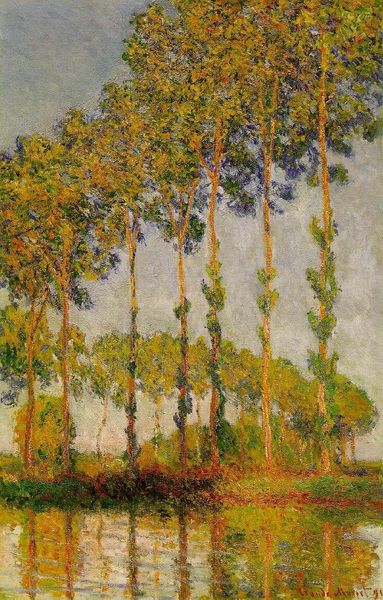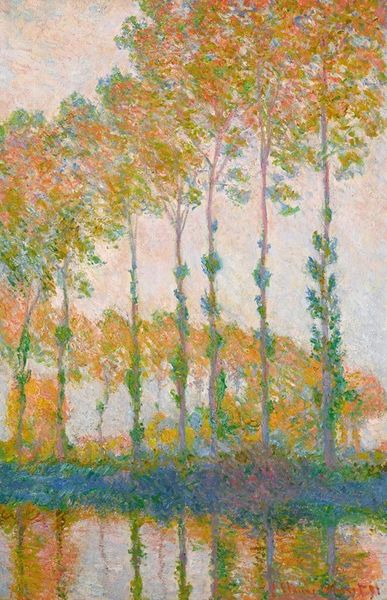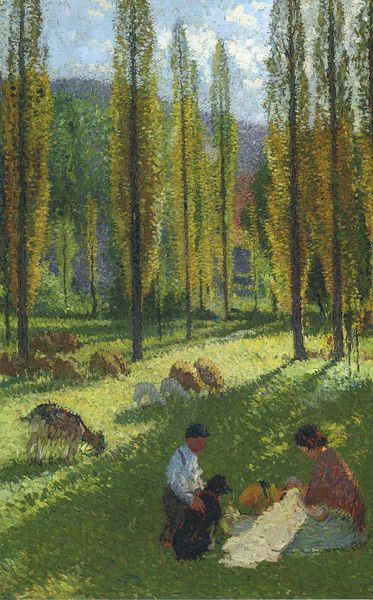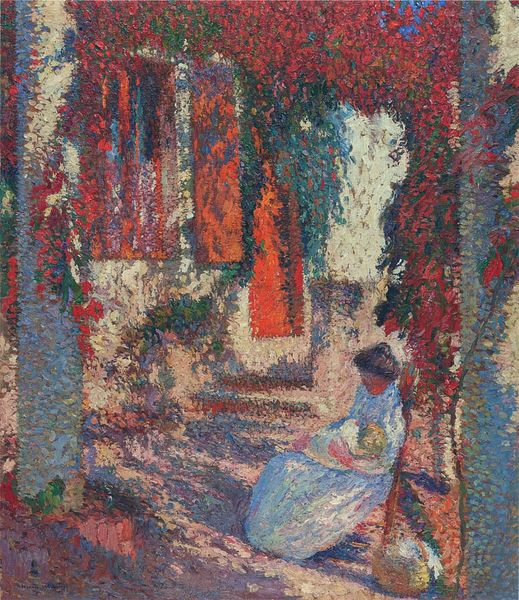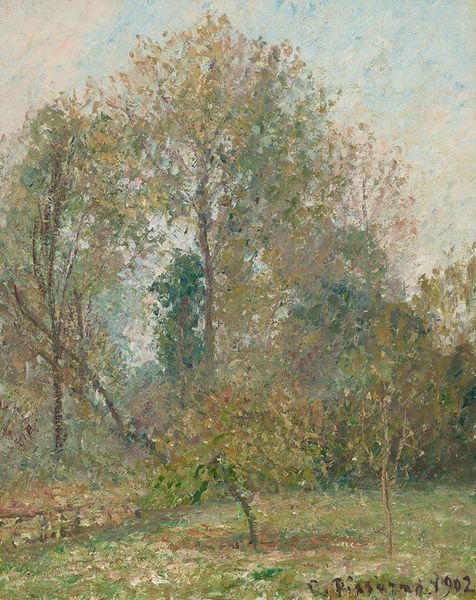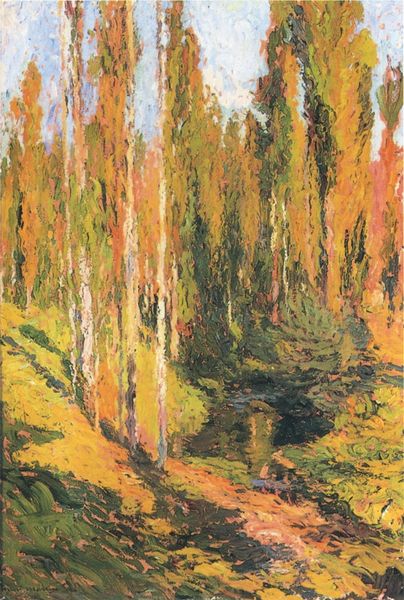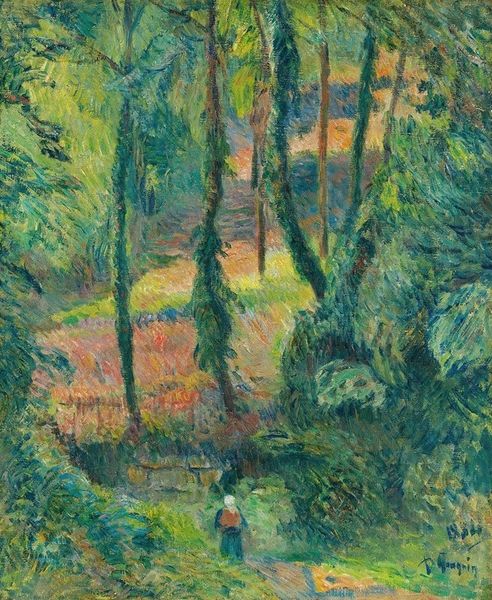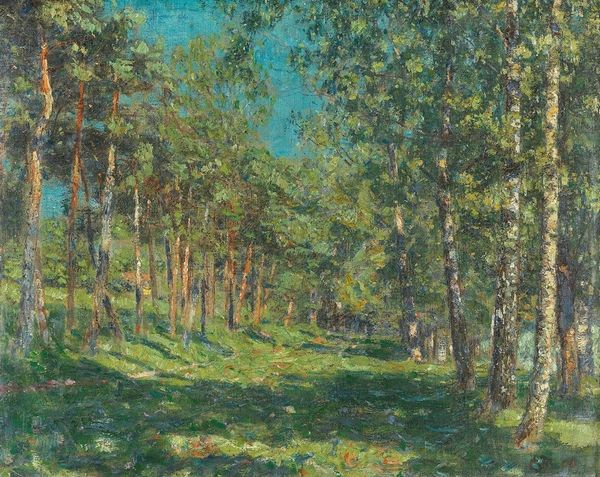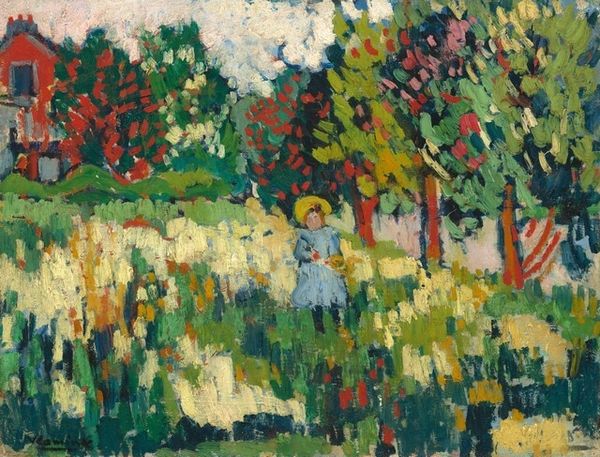
Copyright: Public Domain: Artvee
Editor: So this is Henri Martin’s L’été, scène champêtre, or Summer, Country Scene, painted sometime between 1905 and 1907 using oil on canvas. I'm really struck by the texture, and how the dappled light filters through the trees. It almost feels like a memory, hazy and warm. What draws your eye to this painting? Curator: Well, the entire composition breathes with symbolic weight. Note how the figures are integrated – almost absorbed – into the landscape. The verticality of the trees, repeated like standing pillars, hints at an enduring connection between humanity and nature. Does the color palette evoke any particular feeling for you? Editor: I find it comforting, the greens and yellows remind me of long summer afternoons. Curator: Exactly. And that comfort isn’t accidental. Colors trigger deeply ingrained cultural memories. The golden hues often symbolize abundance, harvest, and a sense of collective well-being. Even the figures' clothing - did you notice their garments? Editor: You mean how they are muted in color? Almost blending in with the nature around them. Curator: Yes, and that can suggest a life lived in harmony with their surroundings. Post-Impressionism often uses color and form to convey not just visual information, but emotional and even spiritual truths. Editor: I never thought about how much intention could be behind even seemingly simple colors. Curator: Martin masterfully uses these visual shorthands to trigger a sense of nostalgia and timelessness, reminding us of a simpler past and a cultural ideal of rural life. Does considering all this deepen your understanding of the painting? Editor: Definitely, I see it now as more than just a pretty picture; it's loaded with cultural meaning! Curator: And that’s precisely why studying symbolism in art is so fascinating!
Comments
No comments
Be the first to comment and join the conversation on the ultimate creative platform.
